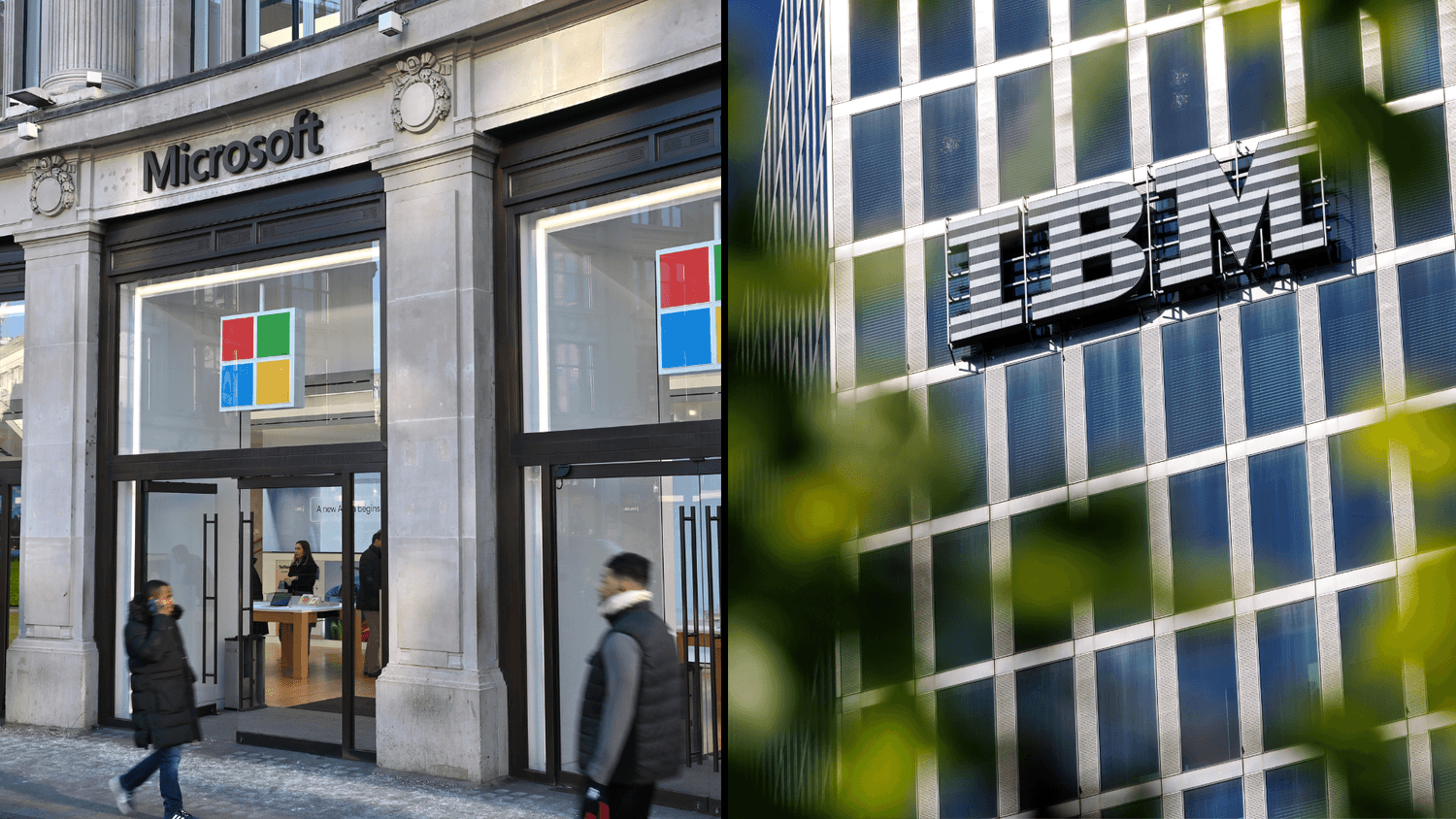In 2025, International Business Machines Corporation (IBM) has made headlines by reaching record stock price highs—a moment of validation for its aggressive restructuring, AI integration, and forward-thinking investments. For a company with a legacy dating back over a century, IBM’s current trajectory shows that it is not just surviving the tech age—it’s thriving in it.
Let’s take a deep dive into how IBM managed to reach these heights in 2025, what it means for investors and the tech industry, and where it may be headed next.
A Look at IBM’s 2025 Record High
In mid-2025, IBM’s stock soared past $220 per share, the highest in its recent history. The surge was fueled by:
- Exceptional Q1 and Q2 earnings
- Explosive growth in AI and cloud services
- Expansion of quantum computing initiatives
- Strong enterprise partnerships
This marks a massive turnaround from earlier years when IBM was often seen as lagging behind cloud giants like AWS and Microsoft Azure. In 2025, IBM has proven that legacy doesn’t mean obsolete—it can mean seasoned and strategic.
Key Factors Behind IBM’s Record-Breaking Performance
1. AI and Watsonx Revolution
IBM’s Watsonx platform, launched in 2023 and matured by 2025, has become a cornerstone of enterprise AI. Watsonx offers businesses tools to train, validate, govern, and deploy AI models securely. This product suite has seen widespread adoption across sectors like finance, healthcare, and government.
By 2025, Watsonx contributes significantly to IBM’s revenues and is considered a robust alternative to other LLM platforms. The inclusion of industry-specific AI assistants has made Watsonx particularly appealing to regulated sectors needing AI governance and transparency.
2. Cloud and Hybrid Cloud Dominance
IBM’s focus on hybrid cloud architecture, especially through its Red Hat OpenShift platform, has been a winning strategy. While hyperscalers dominate the public cloud, IBM has carved out a niche by supporting multi-cloud and on-premise workloads—ideal for large enterprises with compliance or latency needs.
IBM Cloud also powers secure cloud environments for sectors like defense, banking, and critical infrastructure, adding to its competitive edge in 2025.
3. Quantum Computing Milestones
IBM has taken a leadership role in quantum computing, with its 1,000+ qubit processors being tested and deployed for advanced simulations and optimization problems. In 2025:
- IBM’s Quantum System Two became operational.
- The IBM Quantum Network surpassed 250 members, including universities, national labs, and Fortune 500 firms.
- Quantum-as-a-Service is now a real offering, allowing companies to access quantum capabilities over the cloud.
While quantum isn’t mainstream yet, IBM’s early investment has started yielding reputation and revenue gains.
4. Strong Earnings and Profit Margins
IBM posted double-digit growth in its Q2 2025 earnings. Notably:
- Revenue increased by 11% YoY
- Cloud and AI services revenue surged 17%
- Operating margin exceeded 18%
- Net income rose substantially compared to the previous year
These results reassured investors about IBM’s successful transition and sustained competitiveness.
5. Shareholder Confidence and Dividend Stability
IBM maintained its reputation as a dividend aristocrat, increasing dividends for the 30th consecutive year in 2025. With a stable payout ratio and high earnings, shareholders have viewed IBM as a safe income-generating stock with growth potential—a rare combo in tech.
Strategic Acquisitions and Partnerships
In 2025, IBM continued its acquisition strategy, targeting niche AI, data, and cybersecurity firms. Key moves include:
- Acquisition of PolarSignal, a data observability company
- Joint venture with SAP for AI-integrated enterprise solutions
- Strategic alliance with NVIDIA to integrate GPU-optimized AI in Watsonx
- Collaboration with Indian government initiatives in public cloud and data localization
These partnerships have helped IBM expand into new markets while fortifying its technological infrastructure.
IBM’s Market Position in 2025
With these strategic advancements, IBM is now considered a top-three player in hybrid cloud and enterprise AI. Its market capitalization reached over $250 billion, reflecting renewed investor confidence.
Major analyst firms, including Gartner and Forrester, placed IBM among the leaders in AI infrastructure and cloud orchestration platforms in 2025.
Challenges and Considerations
Despite success, IBM faces challenges:
- Competition: Google Cloud, Microsoft, and Amazon continue to innovate rapidly.
- Talent Retention: Hiring and retaining top AI and quantum talent remains difficult in a highly competitive space.
- Geopolitical Risks: Operating in global markets with tight data and cloud regulations can complicate rollouts.
However, IBM’s focus on compliance, governance, and enterprise-grade solutions gives it a safer route in a world increasingly concerned with ethical AI and secure data.
Outlook for the Future
IBM’s roadmap into 2026 includes:
- Enhancing Watsonx with multilingual generative AI capabilities
- Launching commercial-ready quantum solutions for logistics and materials science
- Expanding Red Hat OpenShift offerings into small and mid-sized enterprises
- Increasing AI workloads through edge computing partnerships
Analysts expect IBM’s stock to remain strong, with projected revenue growth of 9–11% in FY2026 and earnings per share (EPS) continuing to grow in double digits.
Frequently Asked Questions (FAQs)
Q1: Why did IBM stock reach a record high in 2025?
Ans:
The stock hit record highs due to strong earnings, growth in AI and hybrid cloud revenue, successful commercialization of quantum computing, and increased investor confidence in IBM’s long-term strategy.
Q2: What is Watsonx, and why is it important?
Ans:
Watsonx is IBM’s AI and machine learning platform launched in 2023. It offers enterprises the tools to train, manage, and govern AI models safely. In 2025, it became one of IBM’s top-performing products.
Q3: Is IBM a good stock for long-term investment?
Ans:
Many analysts believe IBM is a solid long-term stock, especially for those looking for dividend income along with steady growth from AI and cloud technologies. However, like all investments, it comes with market risks.
Q4: How is IBM different from other cloud providers like AWS or Azure?
Ans:
IBM focuses on hybrid and multi-cloud environments, which many enterprises prefer for compliance, cost-efficiency, and flexibility. Its Red Hat OpenShift platform supports deployments across public clouds, private servers, and edge devices.
Q5: What role does IBM play in quantum computing?
Ans:
IBM is a global leader in quantum computing research and commercialization. In 2025, it rolled out Quantum System Two, expanded its quantum network, and began offering Quantum-as-a-Service for enterprise-level simulations.
Q6: How does IBM support ethical AI development?
Ans:
IBM’s Watsonx platform includes AI governance, bias detection tools, and compliance protocols to ensure transparent and accountable AI usage. The company actively promotes responsible AI across its product suite.
Q7: What should investors watch for in IBM’s future?
Ans:
Investors should monitor IBM’s AI growth, quantum commercialization, Red Hat integrations, and global expansion—especially in Asia and Africa. Tracking earnings consistency and partnership announcements is also key.
Conclusion: IBM’s Legacy Reimagined
IBM’s 2025 record high is not a lucky break—it’s a result of strategic pivots, focused innovation, and relentless enterprise value creation. With artificial intelligence, hybrid cloud, and quantum computing at its core, IBM is not just a legacy brand anymore; it is one of the most exciting enterprise tech stories of the decade.
Whether you are a tech enthusiast, investor, or business leader, IBM’s resurgence offers valuable lessons in transformation, patience, and the power of long-term vision.










